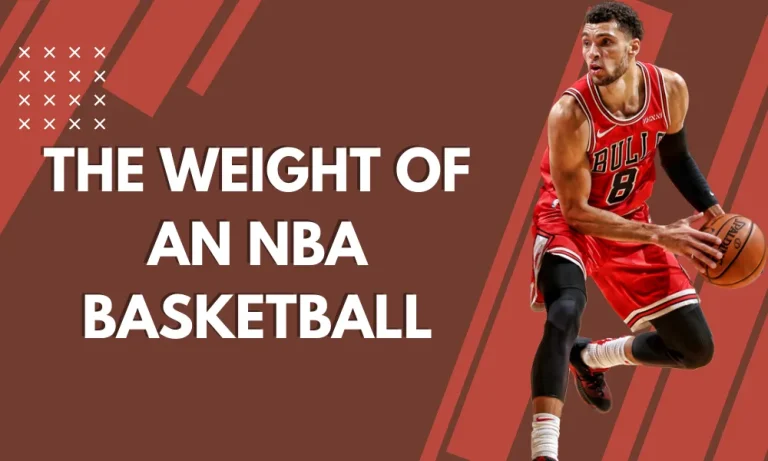Applying Math to Basketball: A Winning Strategy
Blog Title: “Unlocking Success: Applying Math to Basketball Strategy”
Meta Description: “Discover how leveraging mathematical principles can revolutionize your basketball game and lead to victory.”
Basketball is not just about athleticism and skill; it’s a game of strategy. Have you ever wondered how math can give you the winning edge on the court? In this article, we’ll explore the fascinating world of applying math to basketball. Get ready to unlock the secrets behind a winning strategy!
How can we measure player efficiency?
Player efficiency is a crucial aspect of basketball, as it helps us gauge a player’s impact on the game. Two commonly used metrics to measure player efficiency are the Player Efficiency Rating (PER) and Effective Field Goal Percentage (eFG%).
Player Efficiency Rating (PER) is a comprehensive metric that considers a player’s overall contributions on both the offensive and defensive ends of the court. It takes into account various statistical factors such as points, rebounds, assists, steals, blocks, and turnovers. The PER formula produces a single number that represents a player’s efficiency relative to the league average. A higher PER indicates a more impactful player.
Effective Field Goal Percentage (eFG%) measures a player’s shooting efficiency by considering the value of different shots. It accounts for the fact that three-pointers are worth more than two-pointers. The formula for eFG% is (Field Goals Made + (0.5 * Three-Point Field Goals Made)) divided by Field Goals Attempted. A higher eFG% indicates a player who is more efficient at scoring.
These metrics reflect a player’s overall performance and efficiency. By analyzing these numbers, coaches and team managers can identify players who consistently make a positive impact on the court. It helps in evaluating individual players, comparing their performances, and making informed decisions regarding team composition and game strategies.
How can we use player efficiency to build a winning team?
Player efficiency is not only valuable for evaluating individual players but also plays a crucial role in building a winning team. By analyzing the correlation between team success and player efficiency, we can make informed decisions about selecting and recruiting players based on their efficiency ratings.
When evaluating player efficiency, it’s important to consider its impact on team success. Research has shown that teams with higher average player efficiency ratings tend to perform better in terms of win-loss records. This suggests that player efficiency is a significant factor in determining a team’s overall performance.
One strategy for building a winning team is to prioritize recruiting players who demonstrate high efficiency ratings. By focusing on players who consistently make a positive impact on the court, teams can enhance their chances of success. These players contribute to scoring, rebounding, playmaking, and overall team performance.
Efficiency ratings also help in identifying players who excel in specific areas of the game. For example, if a team needs a sharpshooter, they can target players with high three-point shooting efficiency. By strategically selecting players based on their efficiency ratings, teams can build a well-rounded roster that maximizes performance and complements each player’s strengths.
How can we measure shooting efficiency?
Measuring shooting efficiency is essential in basketball, as it allows us to evaluate a player’s accuracy and effectiveness in scoring. Two valuable metrics for assessing shooting efficiency are True Shooting Percentage (TS%) and Three-Point Percentage (3P%).
True Shooting Percentage (TS%) takes into account a player’s performance in various types of shots, including field goals, free throws, and three-pointers. It calculates the percentage of points a player scores per shooting attempt, considering the added value of three-pointers and free throws. A higher TS% indicates a player who efficiently converts their shooting opportunities into points.
Three-Point Percentage (3P%) measures a player’s accuracy specifically in shooting three-pointers. It calculates the percentage of successful three-point shots made out of the total attempts. This metric is important as three-pointers have a higher point value and can significantly impact the outcome of a game. A higher 3P% indicates a player who excels at shooting from beyond the arc.
Accuracy and shot selection are crucial factors in maximizing shooting efficiency. It’s not only about making shots but also about making smart choices on when and where to shoot. A player with a high shooting efficiency understands their strengths and weaknesses, takes open shots, and avoids contested or low-percentage shots.
By analyzing shooting efficiency metrics, coaches and players can identify areas for improvement and focus on enhancing shooting skills. It allows teams to develop game strategies that maximize their offensive potential, emphasizing high-percentage shots and utilizing players who excel in specific shooting areas.
How can we apply shooting efficiency to game strategy?
Applying shooting efficiency to game strategy can give a team a competitive edge by maximizing their scoring potential. By analyzing shooting efficiency data, we can identify optimal shot locations on the court and develop effective offensive plays.
Spatial analysis plays a crucial role in identifying optimal shot locations. By analyzing shooting efficiency data, we can determine which areas of the court yield the highest shooting percentages for our team. This allows us to strategically position our players and create opportunities for high-percentage shots. For example, if our team excels at shooting from the corners, we can design plays that prioritize getting open shots in those areas.
Shooting efficiency data also helps in developing effective offensive plays. By understanding which players have high shooting efficiency from different areas of the court, we can design plays that utilize their strengths. For instance, if we have a player with a high three-point percentage, we can incorporate plays that create open three-point opportunities for them. This targeted approach maximizes our scoring potential and exploits the weaknesses of the opposing team’s defense.
How can we evaluate defensive performance using statistics?
Evaluating defensive performance in basketball is crucial for assessing a team’s ability to prevent their opponents from scoring. Statistics provide valuable insights into defensive effectiveness, and two key metrics for evaluation are Defensive Rating and Steal Percentage.
Defensive Rating measures the number of points a team allows per 100 possessions. It provides an overall assessment of a team’s defensive performance, considering both the efficiency of their opponents’ scoring and the pace of the game. A lower Defensive Rating indicates a more effective defensive team, as they are able to limit their opponents’ scoring opportunities.
Steal Percentage measures the frequency at which a player or team steals the ball from their opponents. It indicates their ability to disrupt the opposing team’s offense and create turnovers. A higher Steal Percentage suggests an active and effective defensive presence.
Individual and team defense both play significant roles in overall defensive success. Individual defense assesses a player’s ability to guard their assigned opponent effectively, including factors such as staying in front of the offensive player, contesting shots, and forcing turnovers. Team defense, on the other hand, evaluates how well the team works together to communicate, rotate, and help each other defensively. A strong defensive team exhibits cohesion, coordination, and a collective effort to limit the opposing team’s scoring opportunities.
How can we use defensive statistics to improve game strategy?
Using defensive statistics to improve game strategy allows teams to identify their opponents’ weaknesses and implement effective defensive strategies to exploit those weaknesses. Statistical analysis plays a crucial role in this process, providing valuable insights that inform our approach on the basketball court.
Identifying opponents’ weaknesses is the first step in using defensive statistics to improve game strategy. By analyzing data such as opponents’ shooting percentages, turnover rates, and offensive efficiency, we can pinpoint areas where they struggle. For example, if an opponent has a low three-point shooting percentage, we can prioritize defending the perimeter and forcing them to take outside shots.
Once we have identified the weaknesses, implementing defensive strategies becomes the next focus. We can develop game plans that capitalize on our opponents’ weaknesses, such as employing double teams on their star players or implementing zone defenses to disrupt their offensive flow. By using statistical insights, we can tailor our defensive approach to exploit the areas where our opponents are less effective.
How can probability enhance decision-making in basketball?
Probability plays a critical role in decision-making in basketball, providing valuable insights into the likelihood of certain outcomes and guiding strategic choices on the court. Concepts like expected value and win probability are essential in understanding and utilizing probability to make informed decisions.
Expected value is a concept that measures the average outcome of a decision based on the probabilities of various outcomes. In basketball, it helps evaluate the potential value of different choices. For example, when deciding whether to attempt a three-point shot or a mid-range shot, we can calculate the expected value of each option based on shooting percentages. This allows us to make decisions that maximize our scoring opportunities.
Win probability is another crucial concept that considers the likelihood of winning a game based on the current situation. By analyzing factors such as the score, time remaining, and team performance, we can estimate the probability of winning. This information guides in-game decisions, such as determining whether to foul, take a timeout, or modify defensive strategies. Understanding win probability enables us to make strategic choices that increase our chances of success.
How can we optimize game strategy using probability?
Optimizing game strategy in basketball involves incorporating probability-based decision-making into coaching and play-calling. By leveraging analytics and probability, teams can make more informed choices that increase their chances of success on the court.
Incorporating analytics-based decision-making is a key aspect of optimizing game strategy. Coaches and teams now rely on statistical analysis to inform their decisions. By studying data on shooting percentages, player efficiency, and lineup combinations, coaches can make strategic choices that maximize scoring opportunities. For instance, analytics may suggest that certain players perform better in specific situations, leading to lineup adjustments that exploit favorable matchups.
Real-world examples demonstrate the success of probability-based strategies in professional basketball. Teams like the Golden State Warriors have embraced analytics and used probability to their advantage. They prioritize three-point shooting, as it offers a higher expected value compared to mid-range shots. This strategy, backed by probability analysis, has led to their success in recent years.
How can predictive analytics help in game planning?
Predictive analytics plays a crucial role in game planning in basketball, providing valuable insights into outcomes and trends. By utilizing advanced analytics and predictive models, teams can make more informed decisions during pre-game preparation and scouting, ultimately enhancing their game planning strategies.
Exploring the use of advanced analytics allows teams to predict outcomes and trends with greater accuracy. By analyzing vast amounts of data, including player performance, team statistics, and historical trends, predictive analytics can generate valuable insights. These insights help teams understand the strengths and weaknesses of their opponents, allowing for more effective game planning strategies.
Incorporating predictive models into pre-game preparation and scouting further enhances game planning. These models use historical data and statistical algorithms to forecast potential outcomes. For example, by analyzing shooting percentages, assist-to-turnover ratios, and defensive efficiency, predictive models can estimate the likelihood of specific plays or player performances. This information guides coaches in determining the most effective offensive and defensive strategies to employ during the game.
How can we leverage predictive analytics to gain a competitive edge?
Leveraging predictive analytics is a powerful method for gaining a competitive edge in basketball. By utilizing data-driven insights and predictive models, teams can make more informed decisions that give them an advantage on the court.
Case studies of teams that have successfully utilized predictive analytics for game planning demonstrate the effectiveness of this approach. For example, the Houston Rockets have embraced analytics and incorporated predictive models into their strategies. By analyzing player performance and shot selection, they have optimized their offensive game plan to prioritize high-value shots. This has allowed them to consistently outscore their opponents and achieve success.
Furthermore, it is important to consider strategies for incorporating predictive analytics into amateur and youth basketball programs. While the availability of advanced analytics may be limited in these contexts, basic statistical analysis can still provide valuable insights. Coaches can track player performance metrics, such as shooting percentages and rebounding rates, to identify strengths and areas for improvement. Additionally, understanding opponent tendencies through basic scouting can help teams develop game plans that exploit weaknesses and maximize their chances of winning.
Conclusion
By incorporating predictive analytics into game planning, teams can make more informed decisions, understand opponent tendencies, and optimize their strategies. From analyzing player performance to utilizing predictive models, the application of math in basketball can lead to success. Whether you’re an amateur player or a professional team, embracing these data-driven insights can give you the winning edge.
Technical FAQs: Applying Math to Basketball: A Winning Strategy
What is predictive analytics in basketball?
Predictive analytics is the use of data analysis and mathematical models to forecast outcomes and trends in basketball.
How can predictive analytics help in game planning?
Predictive analytics provides insights into opponent tendencies, player performance, and optimal strategies, enhancing game planning decisions.
What are some case studies of successful teams using predictive analytics?
The Houston Rockets have used analytics to optimize their offensive strategy, leading to consistent success on the court.
Can amateur and youth basketball programs benefit from predictive analytics?
While advanced analytics may be limited, basic statistical analysis can still provide valuable insights for game planning and player development.
What are the key benefits of incorporating math into basketball strategies?
Math helps teams make informed decisions, gain a competitive edge, and maximize their chances of success on the court.
How can coaches apply math to improve game planning?
Coaches can analyze player performance metrics, study opponent tendencies, and utilize predictive models to optimize their strategies and game plans.






